#battle of the little bighorn
Text

𝐏𝐫𝐞𝐭𝐭𝐲 𝐍𝐨𝐬𝐞 🌻🌻
Pretty Nose : A Fierce and Uncompromising Woman War Chief You Should Know
Pretty Nose (c. 1851 – after 1952) was an Arapaho woman, and according to her grandson, was a war chief who participated in the Battle of the Little Bighorn in 1876.In some sources, Pretty Nose is called Cheyenne, although she was identified as Arapaho on the basis of her red, black and white beaded cuffs. The two tribes were allies at the Battle of the Little Bighorn and are still officially grouped together as the Cheyenne and Arapaho Tribes.
On June 25, 1876, a battalion of the 7th Cavalry, led by George Armstrong Custer, was wiped out by an overwhelming force of Lakota, Dakota, Northern Cheyenne, and Arapaho.
There are many stories that come from this most famous battle of the Indian Wars. However, the most overlooked account is of the women warriors who fought alongside their male counterparts.
Minnie Hollow Wood, Moving Robe Woman, Pretty Nose (pictured), One-Who-Walks-With-The-Stars, and Buffalo Calf Road Woman were among the more notable female fighters.
Pretty Nose fought with the Cheyenne/Arapaho detachment.
One-Who-Walks-With-The-Stars (Lakota) killed two soldiers trying to flee the fight.
Minnie Hollow Wood earned a Lakota war-bonnet for her participation, a rare honor.
Lakota Moving Robe Woman fought to avenge the death of her brother.
And Cheyenne Buffalo Calf Road Woman holds the distinction of being the warrior who knocked Custer off his horse, hastening the demise of the over-confident Lt. Colonel.
Pretty Nose's grandson, Mark Soldier Wolf, became an Arapaho tribal elder who served in the US Marine Corps during the Korean War. She witnessed his return to the Wind River Indian Reservation in 1952, at the age of 101.
#Pretty Nose#Lakota#Cheyenne/Arapaho#Woman War Chief#Battle of the Little Bighorn#1876#Other Lives#Past Times
55 notes
·
View notes
Text

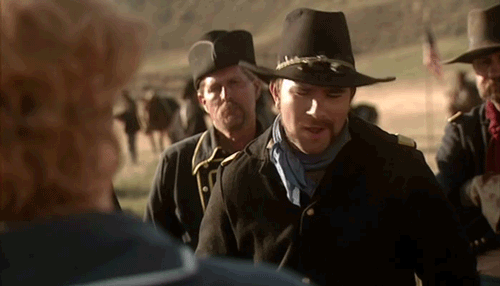

ROGER CLARK as Captain Weir in:
The Wild West (2007)
Season 1, Episode 1: "Custer's Last Stand"
⭐ Watch Custer's Last Stand on DailyMotion. ⭐
(GIF Set 1/6)
#roger clark#the wild west#custer's last stand#toby stephens#westerns#documentaries#bbc#general custer#george armstrong custer#irish actors#my edits#my gifs#tv series#historical events#us history#roger's filmography#roger's tv shows#battle of the little bighorn#lakota nation
65 notes
·
View notes
Text
Frank Star Comes Out, recently elected president of the Oglala Sioux Tribe, sent a letter to Guns of History, Inc. requesting the withdrawal from auction of 111 item Lakota items.
Lakota items:including a square drum, a bone dancing stick, a set of beaded buffalo horns, a ceremonial pipe, and a variety of weapons and objects, including a rattle attributed to Hunkpapa Lakota leader Sitting Bull who lead his people in resistance against United States government policies and incursions into the Black Hills of what is now known as South Dakota. The catalogue also contains weapons alleged to have belonged to Oglala leaders Crazy Horse, who led a counterattack against Lt. Colonel George Custer’s 7th Cavalry, and Red Cloud, who defeated the US during Red Cloud’s War.
#native american#native american art#stolen artifacts#Lakota#stolen art#auction#native history#battle of the little bighorn#sitting bull
3 notes
·
View notes
Text
1876-George Armstrong Custer
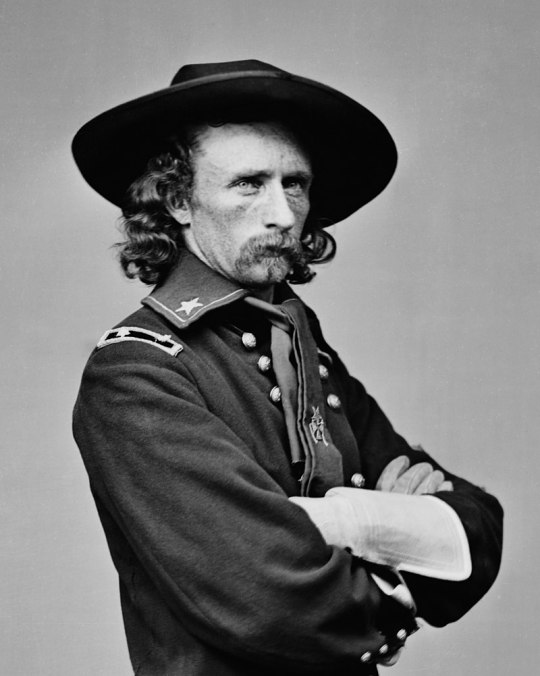
George Armstrong Custer (December 5, 1839 – June 25, 1876) was a United States Army officer and cavalry commander in the American Civil War[1] and the American Indian Wars.

After the Civil War, Custer was commissioned as a lieutenant colonel in the Regular Army and was sent west to fight in the Indian Wars, mainly against the Lakota and other Plains Peoples. On June 25, 1876, while leading the 7th Cavalry Regiment at the Battle of the Little Bighorn in Montana Territory against a coalition of Native American tribes,[4] he was killed along with every soldier of the five companies he led after splitting the regiment into three battalions. This action became known as "Custer's Last Stand"

Public response to the Great Sioux War varied in the immediate aftermath of the battle. Libbie Custer, Custer's widow, soon worked to burnish her husband's memory, and during the following decades Custer and his troops came to be considered heroic figures in American history. The battle, and Custer's actions in particular, have been studied extensively by historians.[15]Little Bighorn Battlefield National Monument honors those who fought on both sides.

0 notes
Text
“When Samantha Thompson read the first line of a long-lost letter, she knew that her work to authenticate and transcribe the mysterious set of rolled-up documents, packed away for some future archivist, was worth it.
"I remember where I was sitting at my desk and I started reading: 'I was born in Montana, my father died when I was four years old and so I lived with my mother and sister and my grandparents and my uncle,' and my heart started beating faster," said Thompson, an archivist at the Peel Art Gallery Museum and Archives in Brampton, Ont.
A few months earlier, Thompson had been going through one of 60 boxes donated to the museum. She came across several pages of thick paper — on one was a detailed watercolour painting, and the others were made up of what looked like two letters, one lengthy and the other short.
While there were some English names like "Reno," "Custer" and "Montana," the letter was written in Old German, a rare script that fell out of use around the Second World War.
"Right away we had this mystery. Why is somebody writing in Old German about what seems to relate to a possibly significant event in U.S. history?" Thompson told Rosanna Deerchild in an interview for Unreserved.
As luck would have it, a colleague's mother could read the rare script and agreed to help with the translation. It took several months, but when it finally arrived in January 2020, Thompson was looking at a first-person account of one of the most significant battles in U.S. history: the Battle of the Little Bighorn.
A written account from Standing Bear
The account comes from Lakota leader Standing Bear, who was just 17 years old on June 25, 1876, when Lt.-Col. George A. Custer and his troops descended on the Lakota and their Cheyenne relatives who were camping along the Little Bighorn River in Montana.
That battle, known by the Lakota as the Battle of Greasy Grass, is celebrated as a victory for Indigenous people who stood their ground and resisted their forced relocation onto reservations. Its anniversary is a tribally recognized holiday in the United States, with many ceremonies beginning on or ending June 25.
In Standing Bear's letter, written in the early 1930s, he tells of how his uncles took him hunting as a boy, and how they would often swim across the Missouri River. One day, his uncle told him they would attend a Sun Dance near the Rosebud River, and that legendary Hunkpapa Lakota leader, Sitting Bull, encouraged many people to attend.
Standing Bear says he witnessed this ceremony and included a painting of Sitting Bull leading the Sun Dance with his letter. The sacred ceremony, according to Standing Bear, lasted three or four days. One more day passed, and that's when Custer's men arrived.
Then I heard a man shouting that the soldiers were coming. They had shot a boy that was on his way to get our horses. I ran back and saw that another man was bringing our horses, I sprang onto a horse but I didn't have time to dress, I had only my shirt but no shoes. I rode with my uncle in the direction toward Reno when on the hill we saw Custer advancing. Before we got closer we saw hundreds upon hundreds of our people around us. A few of them had guns and most of them had bows and arrows.
- Standing Bear, in the letter he dictated in the 1930s
Standing Bear's account of that battle offers a rare written account from an Indigenous point of view. While there are many oral accounts of these types of historic events, very few written accounts are known to archivists. It's one of the reasons Thompson wanted to see the documents repatriated to the Lakota community as soon as possible.
"This was a voice that our archives team unanimously agreed needed to go home. It would speak to us better in its own community, and there was never any doubt about that," Thompson said.
Getting the documents home
A google search introduced Thompson to the work of Tawa Ducheneaux, an archivist with the Oglala Lakota College Woksape Tipi Archives and Tribal Repository in Kyle, S.D. Thompson sent her digital images of the letters and the illustration of Sitting Bull shortly after receiving the translation.
Ducheneaux says she immediately recognized the image as being Plains Ledger art, a style created by northern and southern plains Indigenous people as a way of telling story. She welcomed the opportunity to add it to the Woksape Tipi collections.
"When you think about the winter counts — the visual ways that we would tell stories through the pictorial depictions in winter counts and what became known as ledger art and the revival of ledger art over the last number of decades — it's really powerful. We are here, we are alive, we're telling stories," she said.
It would take nearly two years of cross-border bureaucracy and shipping challenges, exacerbated by a global pandemic, before the letter and painting could be received. They are temporarily being held at the Journey Museum and Learning Centre in Rapid City, S.D.
That's where Arthur Amiotte, the great-grandson of Standing Bear, received them during a small gathering on Dec. 3, 2021.
By this time, Thompson knew that the reason Standing Bear's account of the Battle of the Little Bighorn was written in Old German was because Standing Bear had dictated it to his wife, Louise Standing Bear, whose first language was German. The last lines of the letter read:
Honoured Sir,
I have written what my husband told me and hope you can find someone to translate it. You will notice the mistakes but I have been here for 42 years and have no one to whom I can speak in German.
Respectfully,
Louise Standing Bear
As Amiotte unwrapped the precious letter in December, he offered further analysis on the correspondence.
"[Standing Bear] spoke Lakota directly to [Louise Standing Bear] and then she translated it into German. Since that was her first language and it was an academic language then she could, according to her world view of expression through writing, do a more articulate interpretation of what he was telling," Amiotte said in a video captured by staff at the Journey Museum and Learning Center.
Standing Bear and Louise Standing Bear
Standing Bear met Louise Standing Bear in Vienna in 1890, during his tour with Buffalo Bill's Wild West shows — theatrical productions depicting romanticized images of the American West.
Standing Bear was recovering in Vienna after learning of the death of his first wife and baby daughter, who were killed at Wounded Knee, a massacre of nearly 300 Lakota people by soldiers of the U.S. Army on Dec. 29, 1890.
Eventually the two grew closer, and in 1891 Louise Standing Bear, along with her mother and father, immigrated to the United States and settled at Pine Ridge Reservation. The couple had a son who died in infancy, and three daughters, one of whom was Amiotte's grandmother, who shared many stories of the couple.
"They were such a team," said Amiotte, who explained that they had to face a lot of judgment and hardships over their marriage.
"Even the social scene at Pine Ridge was against the marriage. The priests at Holy Rosary Mission and government officials just thought it was horrendous that a white woman, she could marry an Indian man," Amiotte said.
"And secondly, the fact that she was Austrian, German, during World War One — there was a lot of anti-German, anti-Austrian, European sentiment. But they managed to live through it."
From Pine Ridge Reservation to Brampton
Thompson's best guess as to how the letter ended up in Brampton is that it was a response to an inquiry by William Perkins Bull. Bull, who died in 1948, was a local historian in Brampton whose work forms the core of the local history collection at the Peel Art Gallery Museum and Archives.
Thompson says that because Bull was a prolific letter writer and interested in oral accounts, she believes he wrote to someone on Pine Ridge Reservation to learn more about the Battle of Little Bighorn and Sitting Bull in particular.
"We haven't found the smoking gun yet in the collection where we can see him writing to somebody in South Dakota, but because Standing Bear says in his letter, 'you've asked me whether Sitting Bull was in Custer's battle, I'm getting back to you with this illustration of the Sun Dance which is where I saw him, but I don't know if he was in the battle'."
A rare piece of history
There is dispute among some historians around Sitting Bull's role in the Battle of the Little Bighorn, which is one of the reasons Standing Bear's painting of Sitting Bull at the Sun Dance is particularly powerful, according to Ducheneaux.
"Sitting Bull was in his 60s by this time and … he was providing guidance. So from his descendent that I've spoken with, he sat out, but he gave direction, and that direction also is reflected in this drawing," she said.”
- Kim Kaschor, “Rare Indigenous eyewitness account of Battle of the Little Bighorn found in Ontario,” CBC Radio, Unreserved. Apr 02, 2022.
#brampton#battle of the little bighorn#first hand account#primary source#standing bear#battle of greasy grass#lakota#hunkpapa lakota#sitting bull#peel art gallery museum and archives#indigenous history#indigenous people#settler colonialism
0 notes
Text

Buffalo Calf Road Woman is just like a real buffalo: beautiful and fearless!
🦬
#history#buffalo calf road woman#northern cheyenne#indigenous people#womens history#historical figures#great sioux war#battle of the rosebud#battle of little bighorn#american indian wars#native american history#girl power#george custer#indigenous americans#grl pwr#american history#wild west#united states#indigenous history#powerful woman#usa#american west#historical women#indigenous women#wild west history#nickys facts
96 notes
·
View notes
Text
[Holding Reservation Dogs with both hands] holy FUCK I am so sorry I put off watching you for so long.
#I know every one of these characters jfc#and William is just my Dad if he had been at the battle of Little Bighorn#sadie is native#say more sadie#go watch go watch this is delightful
3 notes
·
View notes
Text
Did Buffalo Bill invent the Wild West?
Buffalo Bill is often accused of having invented a fake Wild West in his shows but TV historian Tony McMahon begs to differ
You’ve heard of Annie Oakley, Calamity Jane, Chief Sitting Bull, and of course – Buffalo Bill. Those great heroes of the Wild West who created the United States of America. Frontier folk laughing in the face of danger. Battling the fearsome Sioux and Cheyenne. Free spirits living by their own code of honour at the expanding new frontiers of America. A tough life punctuated by gunfights and…

View On WordPress
#African American cowboy#Battle Little Bighorn#Bill Cody#Buffalo Bill#Buffalo Bill Edison#Calamity Jane#Cody Kansas#Cody scalping#Custer&039;s Last Stand#Edison cowboy films#General Custer#history#Sioux Cheyenne#Sitting Bull Buffalo Bill
2 notes
·
View notes
Text

Pretty Nose (b. c. 1851), an Arapaho woman who participated in the Battle of the Little Bighorn. She lived to be at least 101 years old and reportedly became a war chief.
5 notes
·
View notes
Text
Did Buffalo Bill invent the Wild West?
Buffalo Bill is often accused of having invented a fake Wild West in his shows but TV historian Tony McMahon begs to differ
You’ve heard of Annie Oakley, Calamity Jane, Chief Sitting Bull, and of course – Buffalo Bill. Those great heroes of the Wild West who created the United States of America. Frontier folk laughing in the face of danger. Battling the fearsome Sioux and Cheyenne. Free spirits living by their own code of honour at the expanding new frontiers of America. A tough life punctuated by gunfights and…
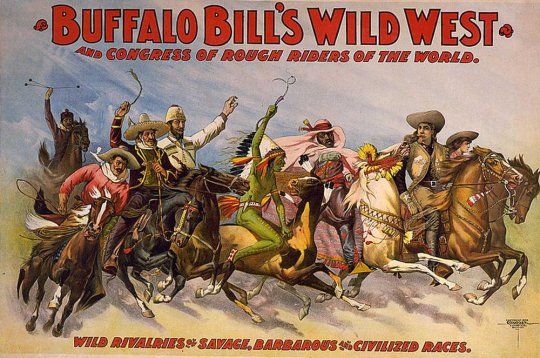
View On WordPress
#African American cowboy#Battle Little Bighorn#Bill Cody#Buffalo Bill#Buffalo Bill Edison#Calamity Jane#Cody Kansas#Cody scalping#Custer&039;s Last Stand#Edison cowboy films#General Custer#history#Sioux Cheyenne#Sitting Bull Buffalo Bill
0 notes
Text
fuck custer all my homies hate custer
1 note
·
View note
Text
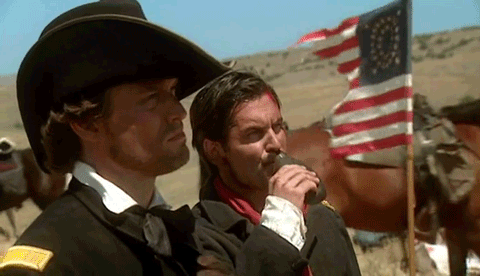
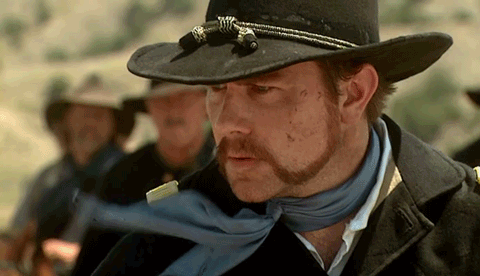

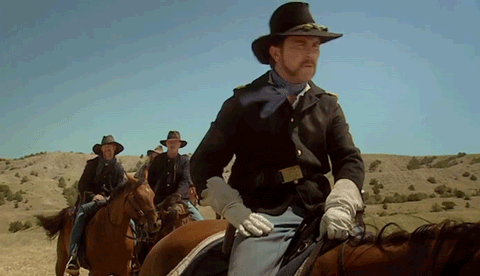
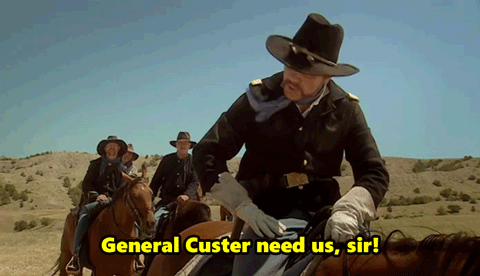

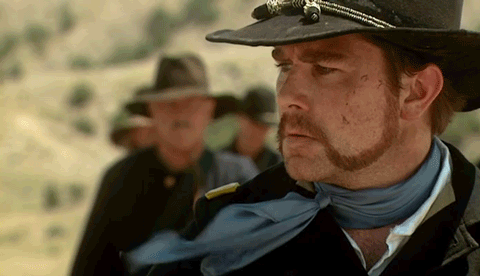
ROGER CLARK as Captain Wier in:
The Wild West (2007)
Season 1, Episode 1: "Custer's Last Stand"
⭐Watch Custer's Last Stand on Dailymotion ⭐
(GIF Set 5/6)
#roger clark#the wild west#custer's last stand#stephen billington#nigel whitney#bbc#general custer#westerns#us history#documentaries#george armstrong custer#battle of the little bighorn#roger's filmography#roger's tv shows#irish actors#lakota nation#historical events#the good ol' fashioned q
38 notes
·
View notes
Text

Well. This book is just a bundle of emotions. I was a bit intimidated by it, but found it to be a manageable and enjoyable read.
The little girl deep inside me who grew up loving horses, Indians, and anything about the Old West thrilled at the stories about Crazy Horse. I was surprised at the great sadness I felt, the loss I felt, that I would never get the chance to ride into those lands when they were untamed and free. I'm envious of the men and women who first laid eyes on such beauty.
I was also surprised to find myself crying over Custer. He was kind of a joke in our family, a byword for stupidity with a hint of cowardice. I stand corrected. He might have been a bit... much... to anyone but his dear wife, but he was by no means a coward or stupid. I truly cried as he died, and my heart broke that two of his brothers, one nephew, and a brother in law died with him.
I wasn't surprised to cry over Crazy Horse, but it was sad to read of the pointless and traitorous death he faced after all the brave things he'd done.
I appreciated the insight Ambrose gave into the inability of the Indians to win the war. The way he graciously explained that no matter what they did, their very culture and way if life made it impossible for them to win.
The only negative thing I can say about this book was the appalling lack of respect Ambrose showed to women who chose to live lives poured our for their husbands, homes, and families. He may not have agreed, but they certainly didn't deserve the lack of respect he poured on them. Almost made me put the book down.
#feed the muse#reading#books#book review#crazy horse#custer#battle of little bighorn#George Armstrong Custer#Stephen E. Ambrose
1 note
·
View note
Text
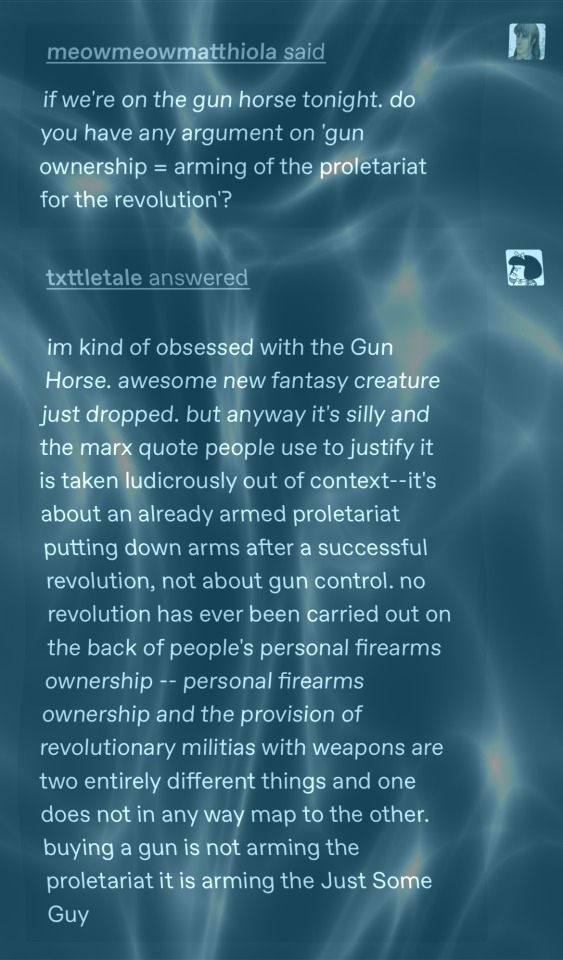
Gee I wonder how common private gun ownership was right before the Russian revolution? Oh wait it was actually common and civilians could easily buy firearms. Here’s a print ad from the time:
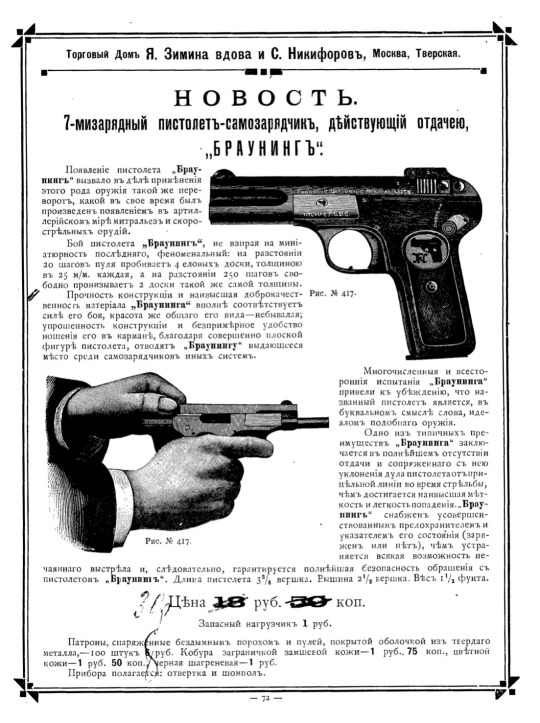
Historically, many revolutions and civil wars involved the use of privately owned firearms. A really common pattern that you see going back hundreds of years is that at the outbreak of conflicts, civilians would form militias, arm themselves with whatever they could get their hands on, storm government armories, and then steal everything not nailed down.
During the Yugoslav civil war, the UN enacted an arms embargo on all sides of the war from Sept 1991 through the end of the war. The VRS split off from the JNA, so they just took those weapons with them. However, the ARBiH had to acquire weapons from a lot of different sources, such as:
Stolen from JNA barracks
Stolen from Yugoslav police
Taken out of museums (Yes, really. They were literally using vintage captured MG42s from WWII)
Handmade (!) (Yes, really. I saw handmade guns that were used in the war on display in a museum in Sarajevo)
Smuggled in by Pakistani Intelligence Services (Specifically anti-tank missiles)
Picture: A group of ARBiH soldiers at the Old Bridge in Mostar, June 1992. The man on the far right is carrying a Winchester Model 70 (captured from a Serb, who purchased it in Montana)
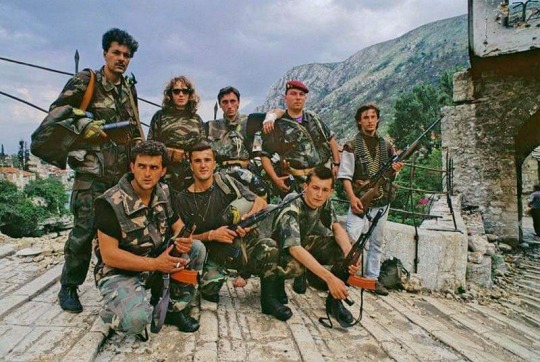
Picture: Two ARBiH soldiers, the one on the right is carrying an MG42.

Another conflict (or, more accurately, long series of conflicts) that we can also look to is the American Indian Wars. Native American combatants used a variety of weapons, but the weapons that they prized most highly were contemporary repeating rifles. Famously, repeating rifles such as the Henry lever-action rifle were contributing factors to the victory of Lakota and Cheyenne forces at the Battle of Little Bighorn in 1876. (Native Americans had been purchasing guns for hunting and combat for over a hundred years at that point. One of the earliest accounts of such a purchase was in 1750 where French traders traded flintlock muskets for horses from Wichitas and Comanches.)
Picture: The Apache military leader Geronimo, on right, accompanied by three younger warriors, 1886.
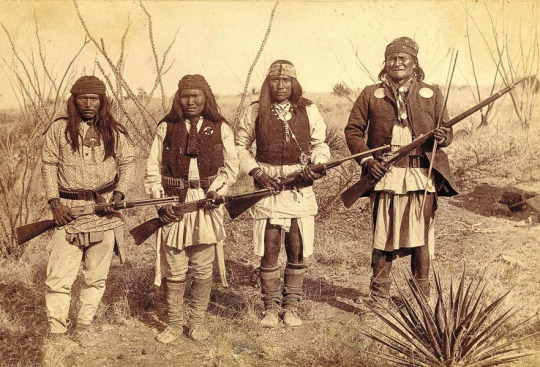
Let’s take another, ongoing example: The Myanmar civil war (2021- present, as of April 2024).
Fighters in the coalition of anti-junta forces use a wide variety of small arms, but most relevant for this post is the manufacturing and use of the FGC-9, a 9mm carbine compatible with Glock magazines.
(Side note: FGC stands for Fuck Gun Control.)
The FGC-9 design uses a combination of 3D-printed parts and easily-manufactured pressure-bearing metal parts.
Picture: a People’s Defense Force soldier carrying an FGC-9.
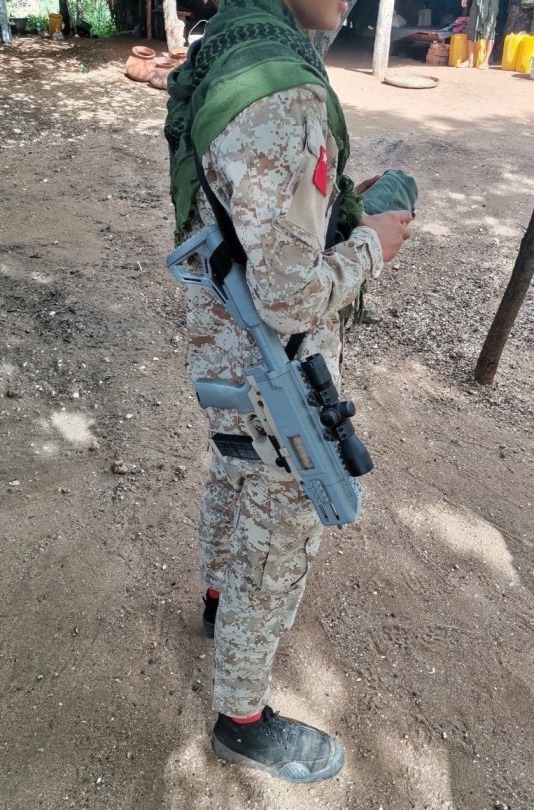
If you genuinely believe that there will be a revolution or civil war in your country in the future, then logically it is 100% reasonable to buy and train with guns right now.
If you genuinely believe that there will be a revolution or civil war in your country in the future, it makes absolutely no sense to hand-wave that away with “one day when the exact right circumstances emerge for a proletarian mass movement to Do Revolution, only then will we acquire even one single firearm. I’m just going to assume there won’t be massive obstacles such as arms embargoes, government crackdowns, or supply-chain issues that could completely stymie our ability to do that.”
If you genuinely believe that there will be a revolution or civil war in your country in the future wouldn’t it be better for the people on your side to already have some level of training & skill with firearms?
If you live in a country where the right wing has spent decades buying guns and salivating over the idea of starting a civil war and killing left-wingers and minorities, do you think it is a good idea to discourage left-wingers and minorities from buying guns?
168 notes
·
View notes
Text
1876-Battle of the Little Bighorn

The Battle of the Little Bighorn, known to the Lakota and other Plains Indians as the Battle of the Greasy Grass,[1] and commonly referred to as Custer's Last Stand, was an armed engagement between combined forces of the Lakota Sioux, Northern Cheyenne, and Arapaho tribes and the 7th Cavalry Regiment of the United States Army. The battle, which resulted in the defeat of U.S. forces, was the most significant action of the Great Sioux War of 1876. It took place on June 25–26, 1876, along the Little Bighorn River in the Crow Indian Reservation in southeastern Montana Territory
#Jun.25.1876#Battle of the Little Bighorn#Great Sioux War of 1876#Custer's Last Stand#7th Cavalry Regiment#history today
0 notes
Text
Daughters of Cheyenne Chief American Horse, 1901. American Horse’s family lived in a tepee in the Lame Deer Hills about 100 miles east of Billings, Montana. Historian O.D. Wheeler, accompanied by photographer L.A. Huffman, interviewed Native warriors who had fought at the 1876 Battle of the Little Bighorn.
L.A. Huffman made fantastic captures that avoided the formalism of “stand still and face the camera.” His portraits of Native Americans rank among the finest in history. Many of Huffman’s best captures were of men working on the open range without posing. This was rare, almost unique, among early photographers when bulky cameras required a tripod for support.

Native American History
95 notes
·
View notes